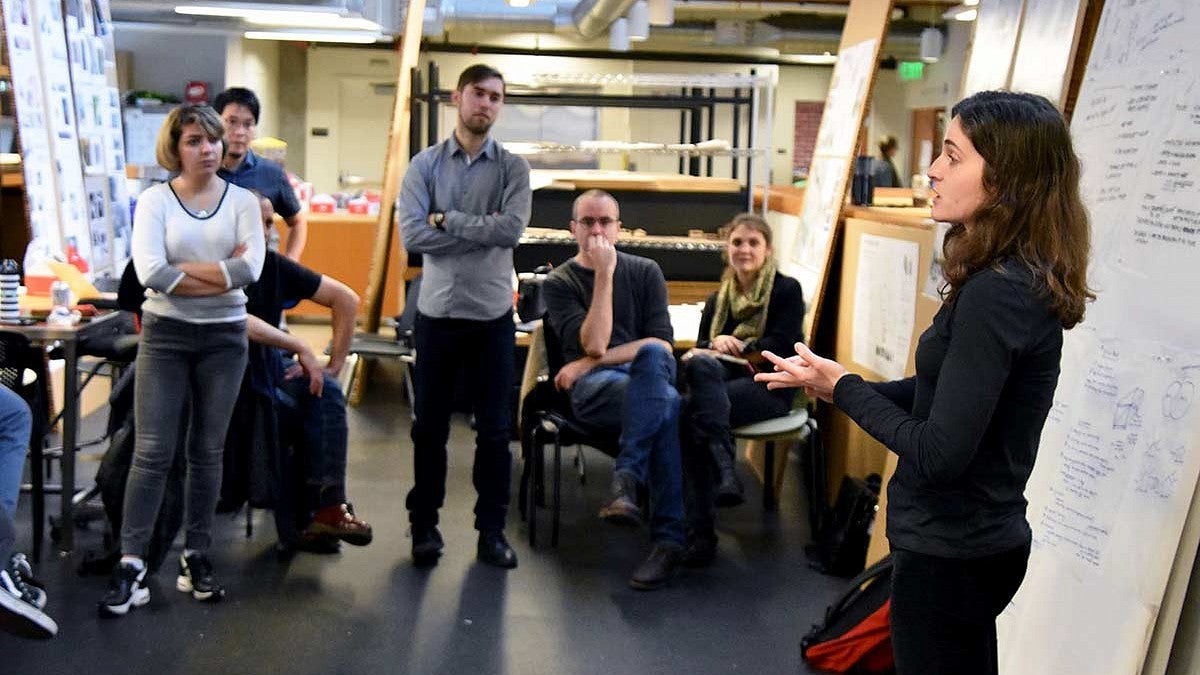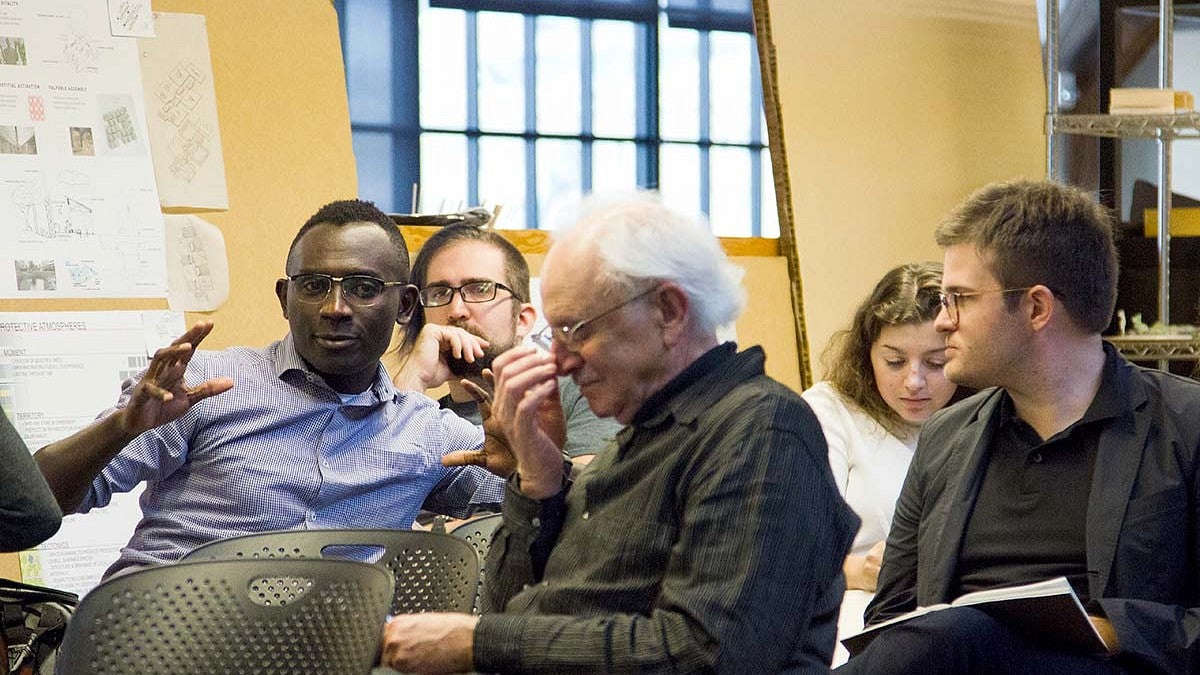
After Hurricane Florence ravaged the Carolinas in September, enormous mosquitos, or “mega mosquitos,” hatched.
“They looked like hornets hitting the windshields of cars,” recalled Brook Muller, architecture professor and director of the UO Portland Architecture Program in the School of Architecture & Environment. “It’s terrifying.”
Or, as leading mosquito researcher Fredros Okumu puts it: Mosquitos are the most dangerous animal on earth (see his TED Talk on the subject). From malaria to dengue, West Nile to Zika, the diseases mosquitos spread know no borders and are becoming more acute and bizarre with climate change and urbanization. According to the New Yorker, “researchers estimate that mosquitoes have been responsible for half the deaths in human history” (“The Mosquito Solution,” 2012).
To address this growing epidemic more holistically, Muller hosted the Protective Atmospheres Workshop October 25–27 on the UO’s Portland campus, gathering scientists, social scientists, public health specialists, designers, artists, and students. The workshop is connected to a fall Portland architecture design studio that tasked students to devise proposals for a multipurpose research and community engagement facility in Dar es Salaam, Tanzania. The workshop was made possible by a grant from the Jeffrey Cook Charitable Trust.
For the studio, students have been investigating containment labs, mosquito farms and cities, experimental huts, mosquito-proof mobile homes, spaces of release and education, and opportunities for community interfacing.
“What is lacking is a public engagement component and a design component,” Muller says of the historical approach to mosquito control. Often, mosquito research centers, full of disease-infected mosquitos, sit in communities that have not been adequately prepared. “There are a lot of people who are anxious and suspicious about the research. How do we engage the public so they understand that this is work that will hopefully improve their health?”
Several speakers presented at the workshop including Okumu, research scientist and head of Environmental Health and Ecological Sciences at the Ifakara Health Institute (IHI) in Tanzania; Mark Benedict from the Center for Disease Control; longtime Portland artist and designer Michael Singer; Ann Kelly, senior lecturer in Global Health at King’s College in London; and Associate Professor Javier Lezaun at Oxford’s School of Anthrolopology & Museum Ethnography.
Students also participated in design charrettes, which the visiting experts reviewed.
“A lot of architecture schools are brutally competitive, but [the University of Oregon] tends to do a lot of teamwork studios, fostering [students’ abilities] to work across disciplines,” Muller says.


The students designed aspects of mosquito cities, or mosquito farms, that are essentially greenhouses with netted sides and translucent tarps as roofs. These structures can grow unbearably hot. One design charrette looked at ways to use passive cooling to lower the temperatures by 15 or more degrees, creating a more comfortable environment for researchers. Others looked at how to better engage communities. Muller said Okumu is excited to implement some of the student designs back in Tanzania.
"I have been doing mosquito work, and in all my life, I have never seen anything like this," said Benedict, of the CDC, at the workshop. "These ideas are so engaging; you are going to have children—and others—lined up to visit."
The workshop aligned with students’ midterms, so students will now implement changes according to the expert feedback on their projects before submitting them to the American Institute of Architects’ 2019 Committee on the Environment student awards.
Additionally, with the support of the Jeffrey Cook Charitable Trust, Muller and Singer Studio plan to travel to Tanzania in January to work with Okumu at the IHI. The trip is a scouting mission for bringing students to the IHI in the future and to investigate how the institute facilitates disease research in its different spaces, potentially creating a master plan for the institute.
